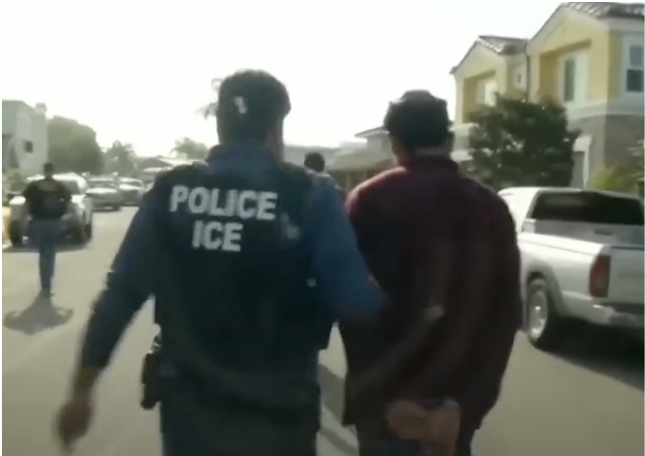Breaking News
No More Safe Havens: Trump Clears ICE to Make Immigration Arrests on Churches, Schools, and Clinics

Source: YouTube
President Donald Trump’s administration made a significant change in immigration enforcement by removing protections established under the “sensitive locations” policy. This guideline previously prohibited Immigration and Customs Enforcement (ICE) and Customs and Border Patrol (CBP) from making immigration arrests in areas deemed critical for public services. These locations include schools, churches, healthcare facilities, and others.
New Immigration Arrest Policy: Common Sense Over Fixed Boundaries
The updated guidance, issued via a Department of Homeland Security (DHS) memo, emphasizes officer discretion and “common sense” over fixed boundaries. Trump’s administration argues that these changes enable law enforcement to make immigration arrests on individuals with serious criminal histories and remove perceived obstacles in enforcement proceedings.
Proponents of the new rules highlight their importance for national security and public safety. However, immigrant advocates warn that this change could increase fear among immigrant communities and hinder access to essential services. These concerns point to a broader debate over the balance between strict immigration enforcement and the rights of vulnerable populations.
The End of Protected Areas for Immigration Arrests
Under the prior guidelines, protections were introduced to ensure individuals could access vital services without fear of enforcement actions. Trump’s reversal of this policy reflects his administration’s hardline stance on immigration. Officials argue that such restrictions provided loopholes for undocumented individuals, including those with criminal records, to evade arrest.
The DHS memo replacing the policy emphasizes that law enforcement officers should rely on discretion and avoid rigid rules. Supporters claim this flexibility allows agents to adapt enforcement to specific circumstances. For example, officers may prioritize operations in sanctuary cities where cooperation with federal authorities is often limited. They can now make immigration arrests without having suspects hide in protected areas.
Community Concerns and Legal Implications
This early, the DHS memo drew criticism from advocacy groups and legal experts alike. Immigrant rights organizations argue that removing these protections could discourage undocumented individuals from accessing healthcare or education. They claim that this apparent lack of protections ultimately harms public health and community welfare.
In addition, the potential for legal challenges looms large, as critics claim that expanded immigration arrests risk violating individual rights. Similar attempts to broaden immigration enforcement under Trump’s first term faced lawsuits that delayed implementation. The removal of protected areas is likely to follow a similar trajectory, with immigrant families and advocacy groups mobilizing against the new guidelines. Nevertheless, proponents argue that the policy change addresses enforcement inefficiencies. Trump administration officials maintain that the ultimate goal is to ensure public safety by prioritizing high-risk individuals for deportation.
Broader Implications for Immigration Policy
The move to widen areas to make immigration arrests is one of Trump’s actions to broaden its administration’s immigration strategy. On his first day back in office, the president issued several executive orders aimed at ramping up deportations, expanding the use of expedited removals, and resuming border wall construction. These efforts underscore his administration’s commitment to fulfilling campaign promises to enforce immigration laws more aggressively. The elimination of protected areas also signals a shift in priorities compared to previous Presidents. While both Obama and Biden administrations emphasized targeting national security threats and recent border crossers, Trump’s approach casts a wider net when initiating immigration arrests. Critics warn that this could lead to the detention of non-criminal undocumented individuals, further straining families and communities.
Additionally, the policy may place new burdens on immigrants to prove their eligibility to remain in the U.S. without the opportunity for court proceedings. This expedited removal process could expedite deportations and discourage repeated attempts to cross the border illegally. As the Trump administration continues to implement its immigration crackdown, the effects on communities, law enforcement, and the legal system remain to be seen. Whether this approach achieves its stated goals of enhancing security and efficiency or exacerbates challenges for immigrant communities will shape the ongoing debate.
Do you agree with the DHS order to remove “sensitive locations” protections when making immigration arrests? Tell us what you think!
